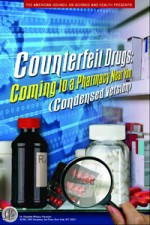
According to the World Health Organization, a counterfeit medicine is one which is deliberately and fraudulently mislabeled with respect to identity, composition and/or source. This definition of counterfeits includes not only completely fake drugs, but also those that have been tampered with, adulterated, diluted, repackaged or relabeled so as to misrepresent the dosage, origin or expiration date, as well as substandard drugs that were cheaply produced in order to make unlawful profit.
Counterfeit drugs represent a real and growing danger to global health. The most widely-cited estimate is that 10% of the world s drug supply is counterfeit. Contributing to this growth has been the increasing size and sophistication of drug counterfeiting rings and the widening involvement of organized crime groups. Counterfeiting is an especially serious problem in developing countries, where supply shortages, lax regulations and oversight, and corruption allow the trade to thrive.
This paper explains what measures the federal authorities are taking to combat counterfeit drugs, how state and local officials need to step up, and what individual consumers can do to protect themselves.
Please also see our 2009 updated version of this publication.
Counterfeit Drugs: Coming to a Pharmacy Near You (Condensed Version)


